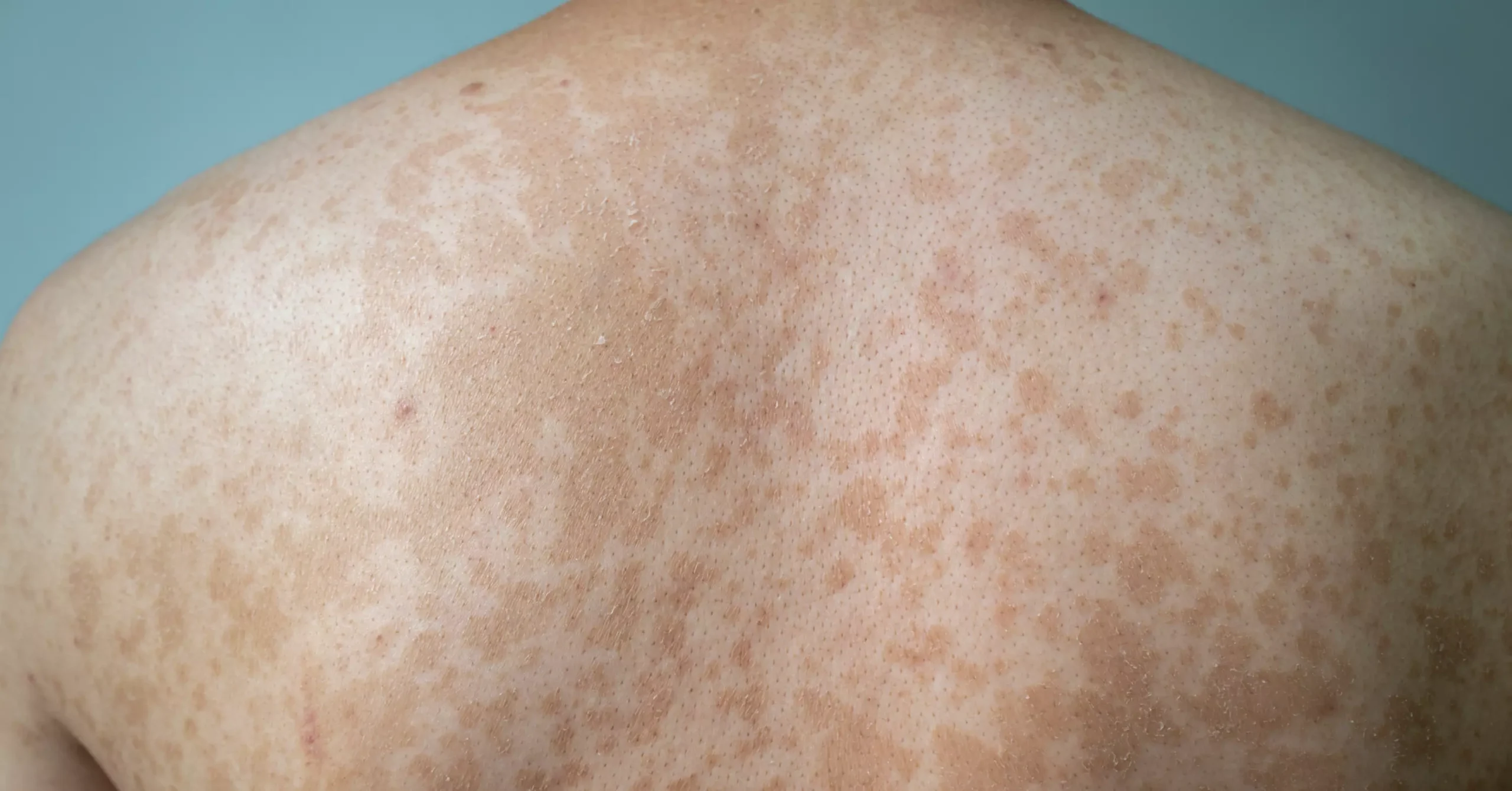What is tinea versicolor?
You know that appearance isn’t everything. But you want how you feel on the inside – healthy and vibrant – to match how you look on the outside. That’s why a skin condition like tinea versicolor – a common, non-contagious fungal infection that causes patches of skin to become discolored – can be so upsetting and frustrating. The good news is that tinea versicolor is treatable – it just takes time. Let’s take a closer look at this skin condition.
What does tinea versicolor look like?

Depending on your skin color, tinea versicolor may appear as small, flat and circular patches that are white, pink, red, tan or brown. This skin condition most often appears on the arms, chest, neck and back and the patches may feel rough and scaly to the touch. The affected areas may also itch and the condition is typically more noticeable during the summer months because the affected skin doesn’t tan.
What causes tinea versicolor?
Your skin is your largest organ and the outer layer is home to millions of beneficial bacteria, fungi and viruses. This diverse community of microorganisms (1,000 species of bacteria alone!), fight against pathogenic threats and help support your immune system. Tinea versicolor can develop when one of these microorganisms, specifically the fungus malassezia, grows too quickly and throws your skin’s ecosystem out of balance. Why does this happen? Fungus thrives in certain conditions including when it’s hot and humid, your skin is oily, hormonal changes occur and your immune system is weakened.
Who gets tinea versicolor?
Anyone can get tinea versicolor. But teens and young adults are more prone to develop this condition. Also people who live in hot and humid climates where excessive sweating is par for the course are especially vulnerable. In more temperate climates, you’ll see an uptick in this condition during the hot summer months. While tinea versicolor isn’t painful or contagious, if left untreated, symptoms can worsen.
Treating tinea versicolor
Treating tinea versicolor depends on several factors, including where it appears on your body, how much of your skin is affected and the size of the patches. In some cases, over-the-counter (OTC) antifungal creams may be effective in quieting and managing this condition. You can also treat affected areas with antifungal shampoos that contain selenium sulfide or ketoconazole. In some cases, prescription antifungal creams may also be recommended. With the right treatment, tinea versicolor should begin improving in about 6 weeks, but it can take longer for skin to fully clear up.
Pro tips
Tinea versicolor is often a persistent skin condition that keeps coming back – especially during the summer months. That’s why it’s important be proactive and take steps to prevent a recurrence.
Tips to manage tinea versicolor
- Hit the showers — Shower daily to remove excess bacteria and fungus.
- Change things up — Put on clean, dry clothes after working up a sweat.
- Cut the grease — Don’t use skin products that contain oil.
- Stay fashionably loose — Avoid wearing tight and restrictive clothing.
Online treatment for tinea versicolor
Don’t wait months for a dermatology appointment. Online care provides a fast, convenient and affordable way to get the personalized skin care regime and treatment you need to manage and heal many common skin conditions.
Share this post
Do you know someone who could use a simple & affordable healthcare option?

